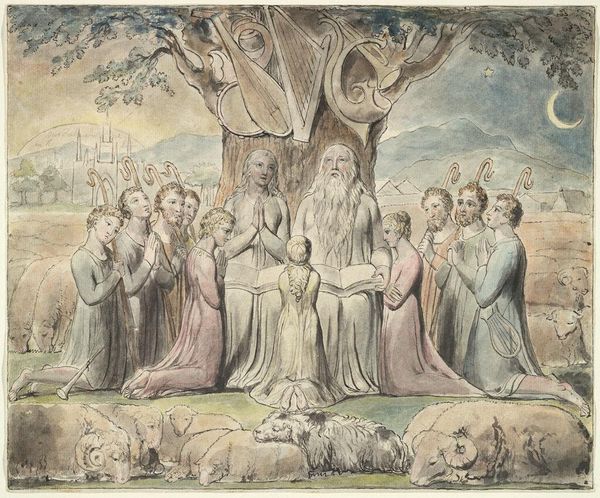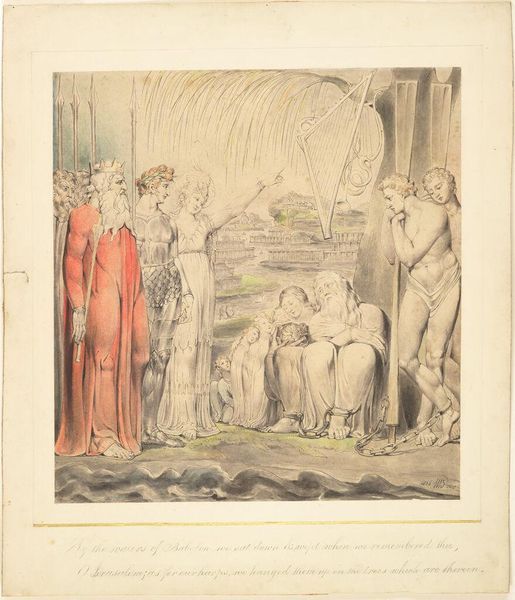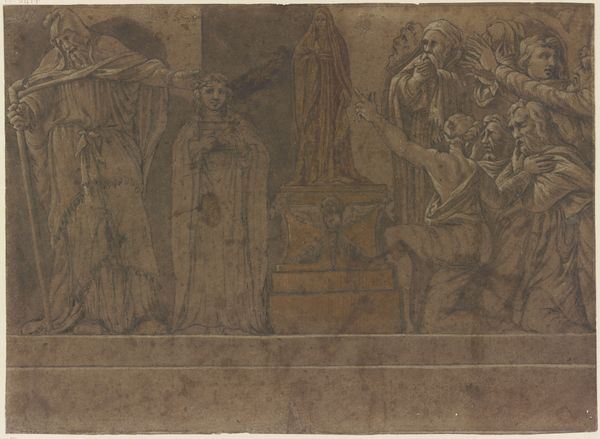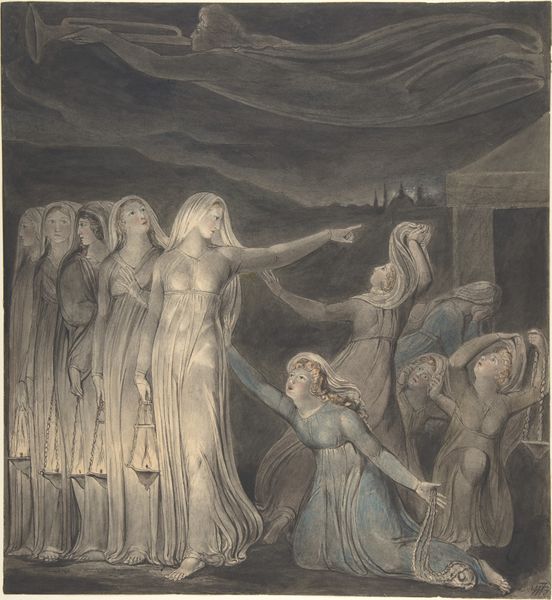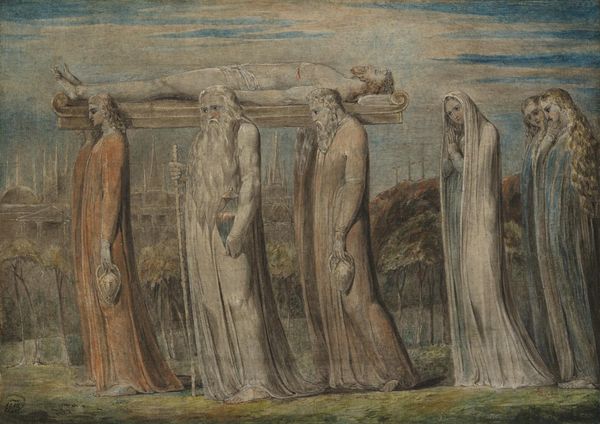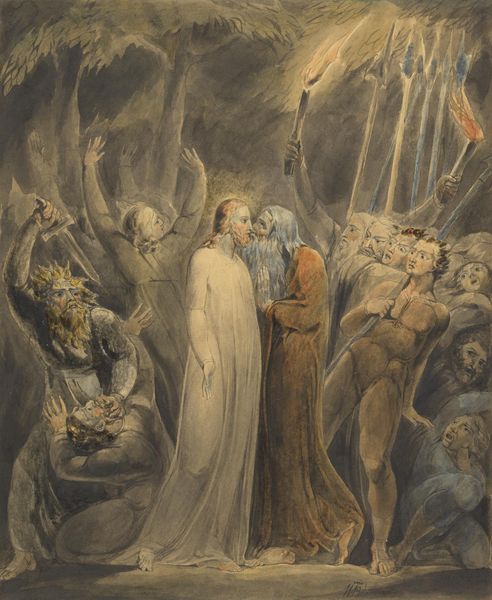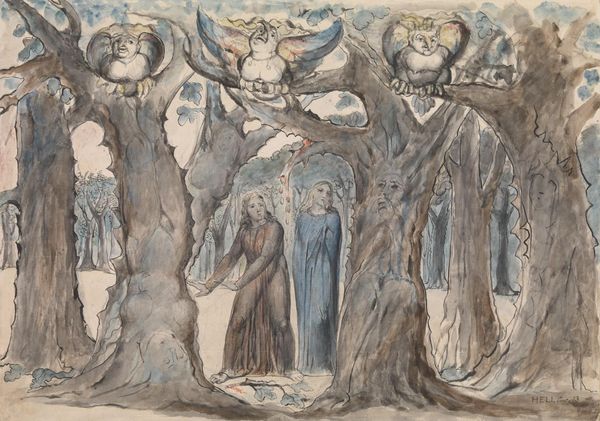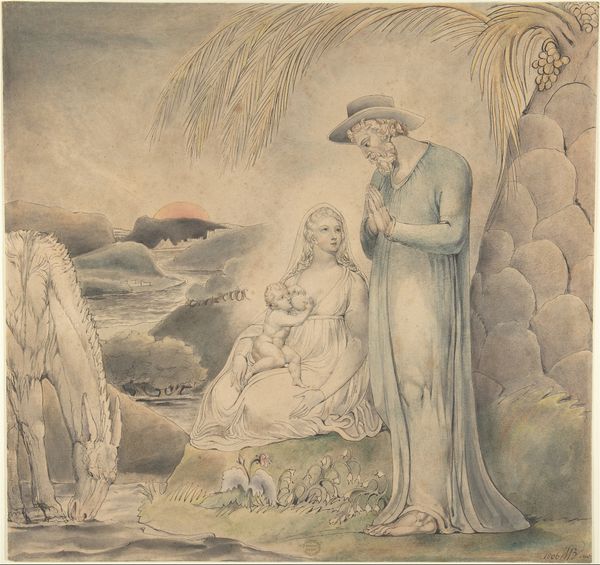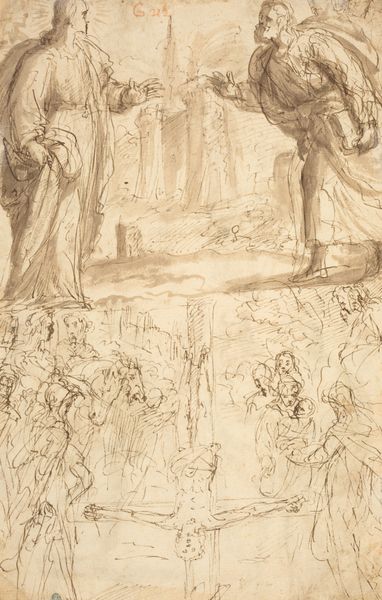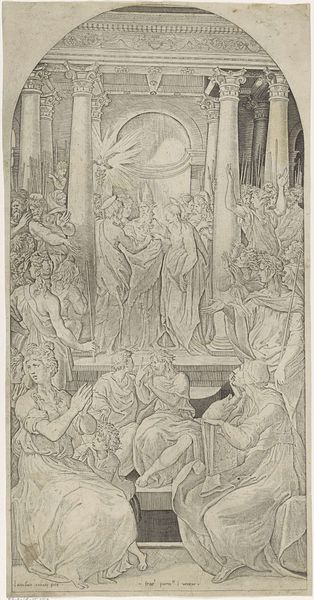
drawing, watercolor
#
drawing
#
landscape
#
figuration
#
watercolor
#
romanticism
#
watercolour illustration
#
history-painting
Dimensions: overall: 23.4 x 28 cm (9 3/16 x 11 in.)
Copyright: National Gallery of Art: CC0 1.0
Curator: Let's turn our attention to William Blake's watercolour illustration, "Job and His Family Restored to Prosperity," created around 1821. It’s a fascinating example of his romantic vision. Editor: It strikes me as almost dreamlike. The palette is muted, ethereal even, giving the scene a kind of weightless, floating quality, despite the solidity of the figures. It evokes feelings of serene acceptance, tinged with something that feels faintly tragic. Curator: Absolutely. The composition certainly invites layers of symbolic reading. Notice how Job, now aged and with a flowing beard, stands centrally, flanked by his family. The musical instruments and scrolls they carry, pointing toward the moon and stars, denote the harmony restored after immense suffering. This links deeply to Blake’s personal mythology – restoration as a key part of his spiritual view. Editor: This is fascinating, especially knowing Blake's social critiques and how deeply felt his beliefs were regarding justice and inequality. Considering that the Book of Job deals so directly with the problem of underserved suffering, does that inform Blake's Romanticism here? Curator: Indubitably. The romantic gaze here shifts. The figures and instruments pointing to the heavens indicate that suffering will not find its relief within this reality, while the book scroll, also directed heavenward, illustrates Blake's belief that words, divinely inspired, hold immense spiritual power. But, to read Blake in the context of his moment also is key: the rise of capitalism and early industrial exploitation may also weigh into these thematic readings of restoration. Editor: I see the way this imagery invites that more complex reading of spiritual relief as a call for justice, maybe even a revolutionary act, given Blake's historical moment. He uses these symbols, these almost angelic figures, to illustrate a need for divine intercession and intervention. That's a far cry from pure, passive acceptance. The sleeping sheep in the foreground seem like they are awaiting that awakening as well. Curator: A beautiful reading. And, returning to the material composition, the delicacy of the watercolor medium further enhances this atmosphere of transcendent healing and peace. The very act of layering water upon paper seems almost ceremonial, invoking cycles of washing, cleansing and purification through symbolic, painterly ritual. Editor: Yes, exactly. I’ll certainly look at the work anew after that. I was ready to say serene—now I feel its latent agitation. Curator: Precisely the dialogue art should evoke! It’s why these layers of symbol and the weight of context ensure that images such as this keep whispering new meanings across the centuries.
Comments
No comments
Be the first to comment and join the conversation on the ultimate creative platform.
